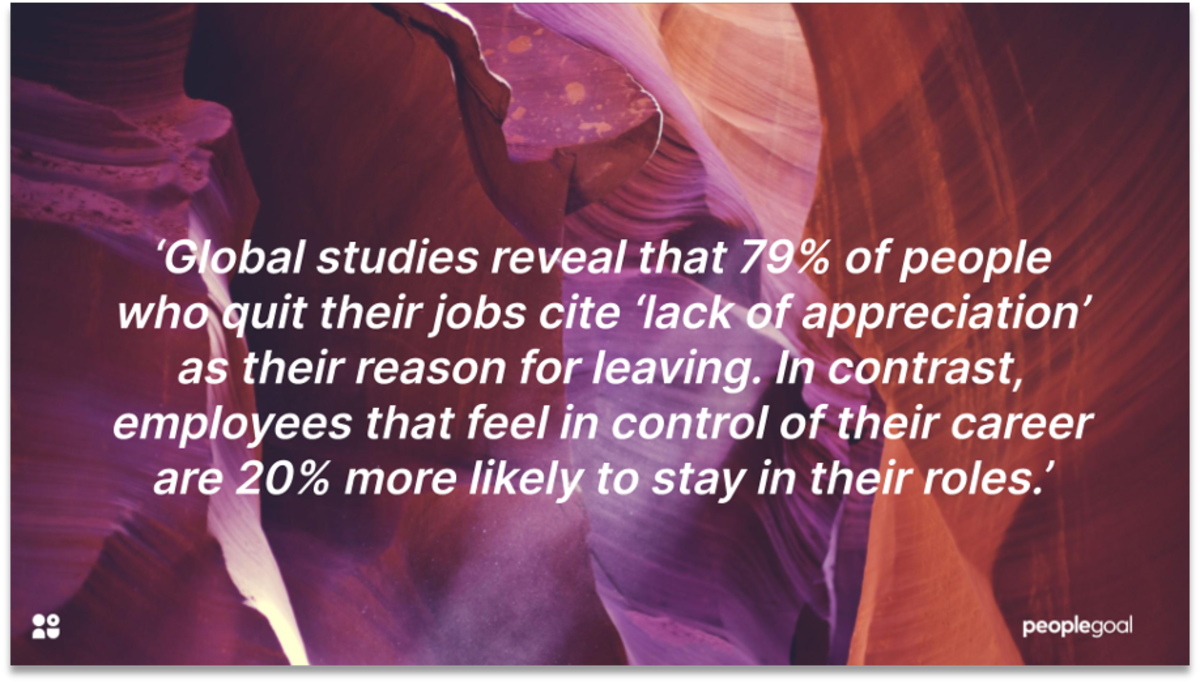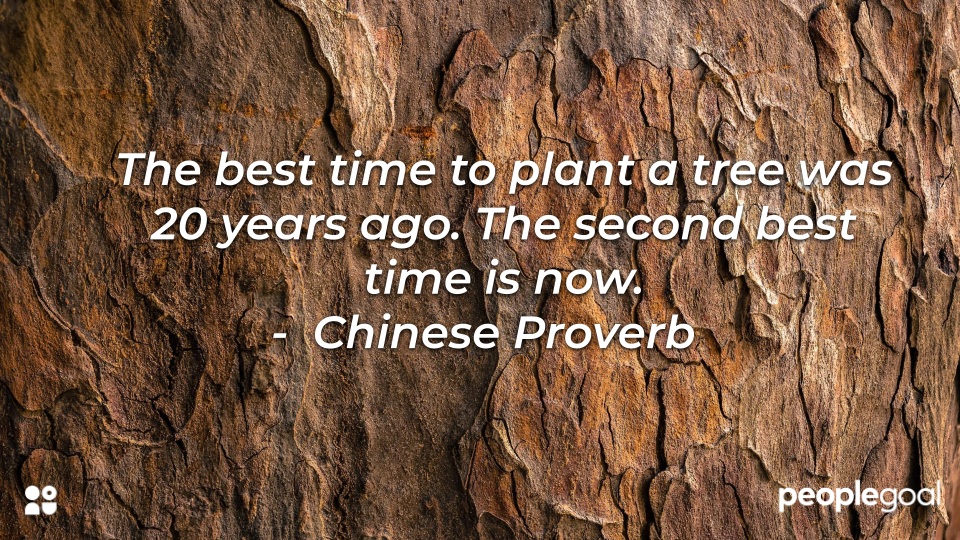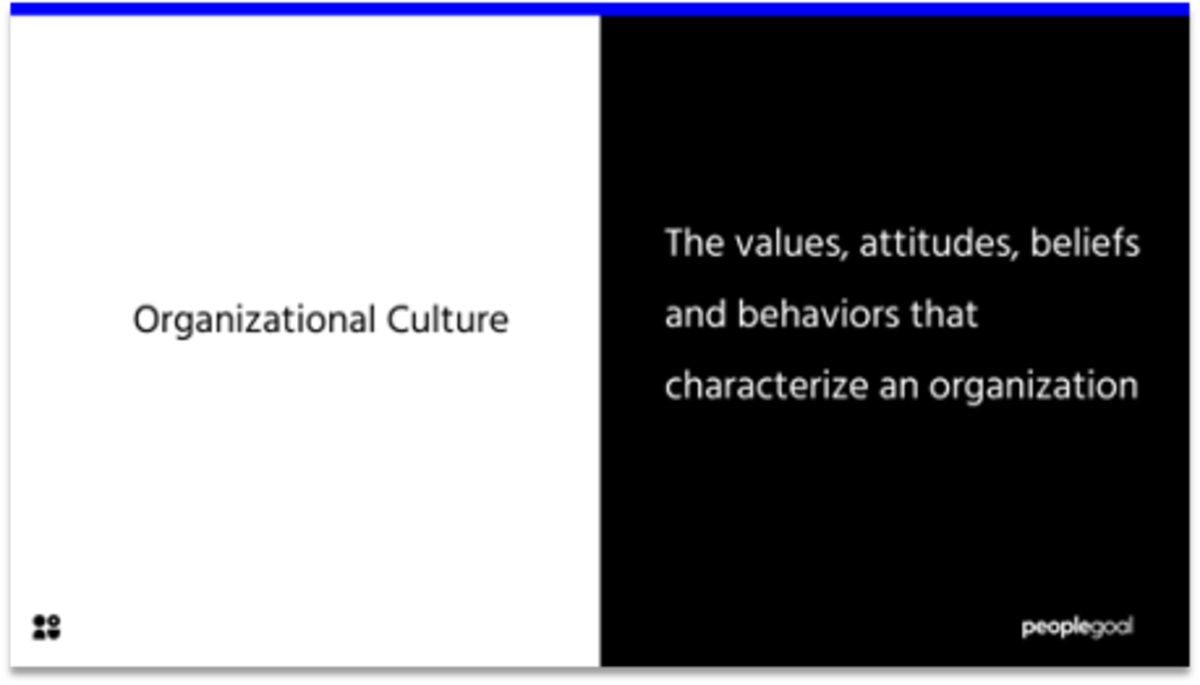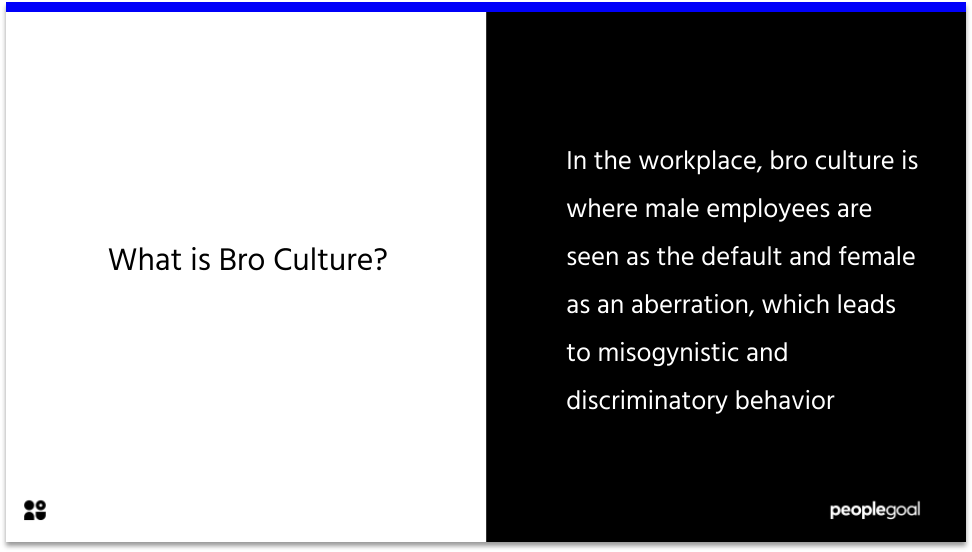Instant gratification permeates through all levels of life. From that chocolate bar that you want right now, to buying a car with a loan and 0% deposit. And more than ever it feels like we should be able to get what we want when we want it. But how does this culture of immediate reward affect employees in the workplace?
Looking ahead to HR’s top priorities in the new world of work, strategizing a balance between long-term initiatives and immediate rewards will play a part in many (if not all) areas of employee engagement. From employee recognition and employee wellbeing programs to building a high-performance culture, playing on the power of instant gratification can lead to big rewards.
What is instant gratification?
Instant gratification is the experience of satisfaction upon receiving a reward immediately after an action. Essentially, instant gratification is the desire to experience gratitude, fulfilment or pleasure, well… ‘immediately’ or without delay.
Instant gratification is very closely linked to the pleasure principle. The pleasure principle denotes the idea that humans are governed by the desire for pleasure and gratification; a slightly more holistic view which describes the constant search for gratification and pleasure, compared to immediate gratification which describes the seeking out of reward after doing something.
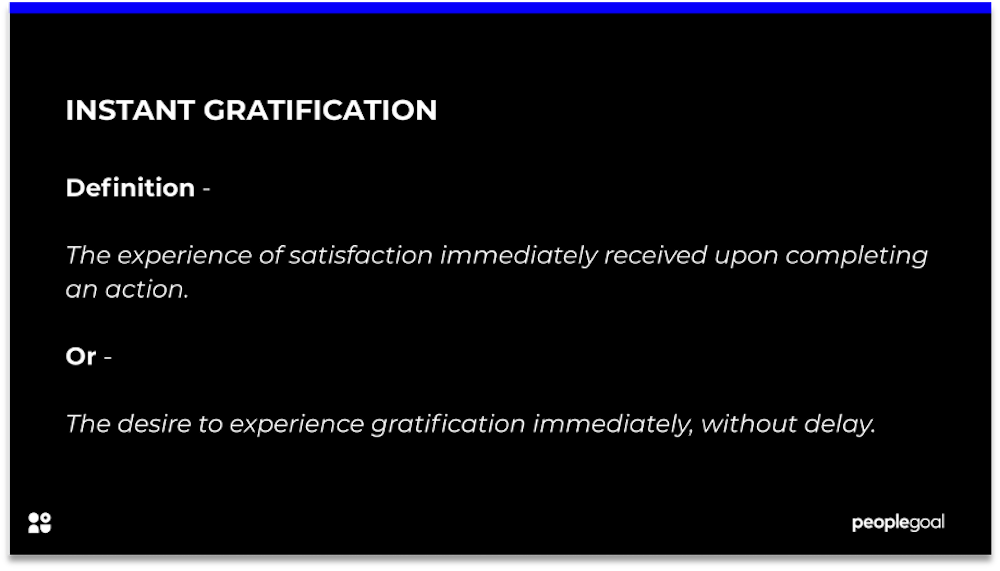
Is instant gratification becoming a cultural problem?
We are now living in a time of instantaneous gratification. Everything we want is within our grasp. You haven’t watched the new series of ‘Sex Education’ yet? No worries. Sit down, turn on the TV and voila.
Ever been in a pub with friends and someone asked a completely off topic question? How long does a Komodo dragon live for? 30 years. But that doesn’t matter. What matters is that the answer can be provided in 0.68 seconds (according to Google).
Social media allows us to post, upload videos and instantly contact people. Emails, Slack, Teams and other workplace communication tools use their real-time functionality to keep us constantly on alert. We are living in an ever-growing connected world fuelled by modern devices and information exchange.
Instant gratification is now expected in a number of contexts as highlighted above. Further, the increasing proportion of ‘Gen Z’ and millennials in the workplace means that instant gratification is becoming more ubiquitous. These generations are accustomed to immediate gratification.
It’s not becoming a problem per se. But the ease at which everything is immediately at our feet has the potential to cause harm if not. These changes are NOT a bad thing, but it is important for organizations to recognize and understand immediate gratification’s growing influence on employees – especially when it comes to the remote workplace. These are a few areas you should think about to make the most of quick feedback and instant, feel-good boosts.
Harness the power of instant gratification in the workplace
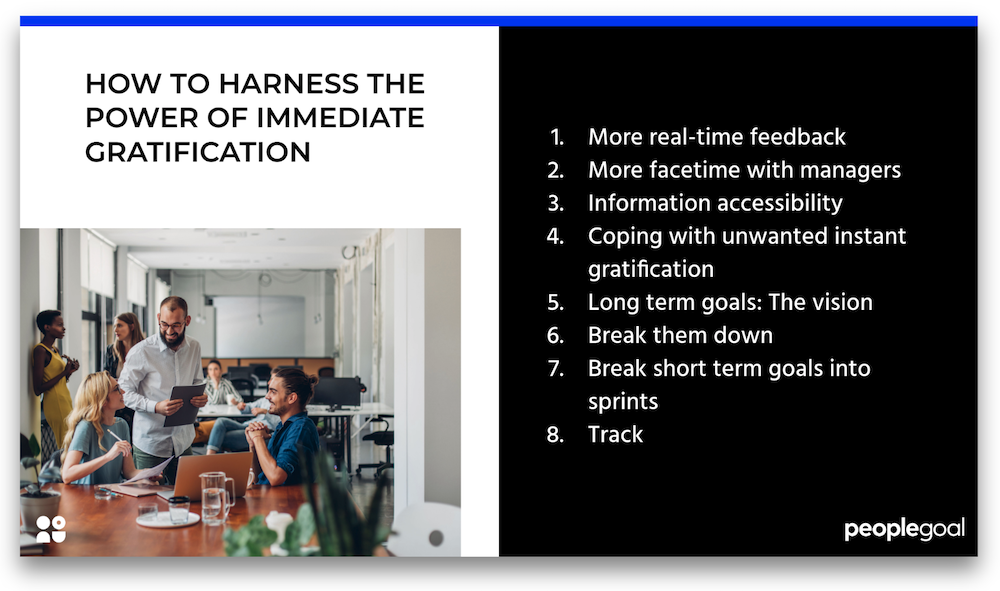
More real-time feedback
Almost 70% of the millennial workforce believes that annual performance reviews are a doomed process. Compared to instant gratification, annual performance reviews rely on the accumulation of positives and negatives throughout the year. Millennials don’t want to wait for the end of the year to hear what they are doing well and where they need to improve. During the 2010s there was a shift from these traditional performance management methods to continuous performance management, making use of more regular 360 feedback, check-ins, recognition and rewards.
Make use of 360 feedback tools to set up a cycle of regular peer feedback.

More facetime with managers
Similar to the previous point but more people-focused, there is a growing demand from the younger workforce to want more face-to-face time with their managers. This ties in with more continuous methods of performance management, but also adheres to the principles of immediate gratification when completing a task.
Information accessibility
An organization is guaranteed to have vast amounts of information and data. It is inevitable. Employee handbooks, policies, contacts, benefits, holidays, sick leave, it never ends. There is so much information out there which an employee at some point will want. Make this information easily accessible! Tell employees where to find them. They will have the information they need within seconds. For example, if they feel ill in the morning, make the sick leave policy easy to find and help employees take the necessary measures for themselves.
Coping with unwanted instant gratification in the workplace
When it comes to long-term fulfilment and success, instant gratification can hinder long term goals. It can mask what you really want to achieve and delay long-term gratification. Encourage your workforce to find a balance between immediate gratification from feedback, check-ins and recognition, with long-term strategic planning and objective setting.
Long-term goals: the vision
The first step to achieving any objective is to visualize what you want to achieve by the end of the goals process.
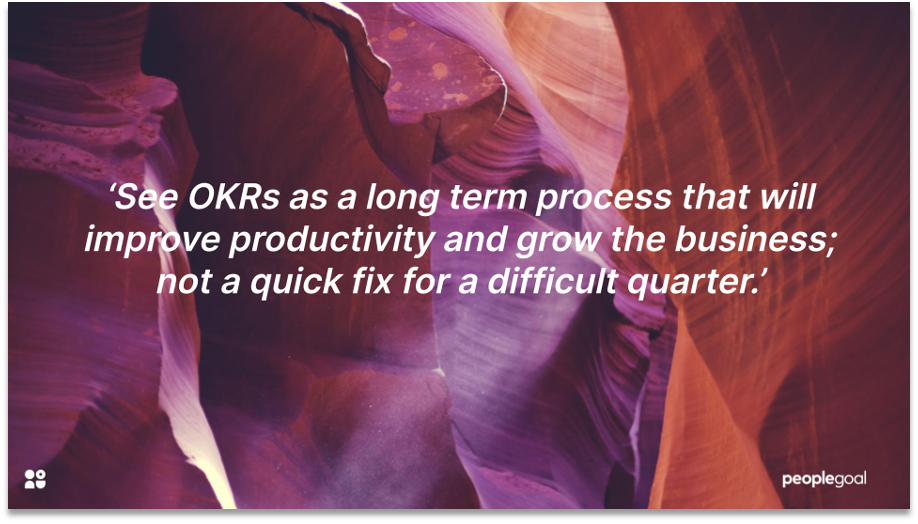
Break short-term goals into sprints
Create yourself a timeline along which you create multiple short-term goals. Breaking down your long-term goals into shorter ones not only makes the success likelihood increase, but also keeps you motivated and rewarded along the way.
Up to you this one, but I believe splitting your shorter goals into sprints is a more exciting, time-shortening method. Break down a two-month goal, into four, two-week sprints for example – and mark off your progress along the way with small rewards.
Track progress along the way
Tracking your progress is important. It will enhance your motivation to achieve, indicate warning signs, reveal areas that need development and show you overall progression. Regularly review your progress and course correct if necessary.
So, on balance, instant gratification in the workplace needn’t be a bad thing! As they say, everything in moderation. Finding a good balance between long-term strategic planning and the quick boost of instant gratification will help to keep team members motivated and on track. Speaking of team members, check out our next blog all about how to boost team engagement and performance.
Ready to 3x Your Teams' Performance?
Use the best performance management software to align goals, track progress, and boost employee engagement.

